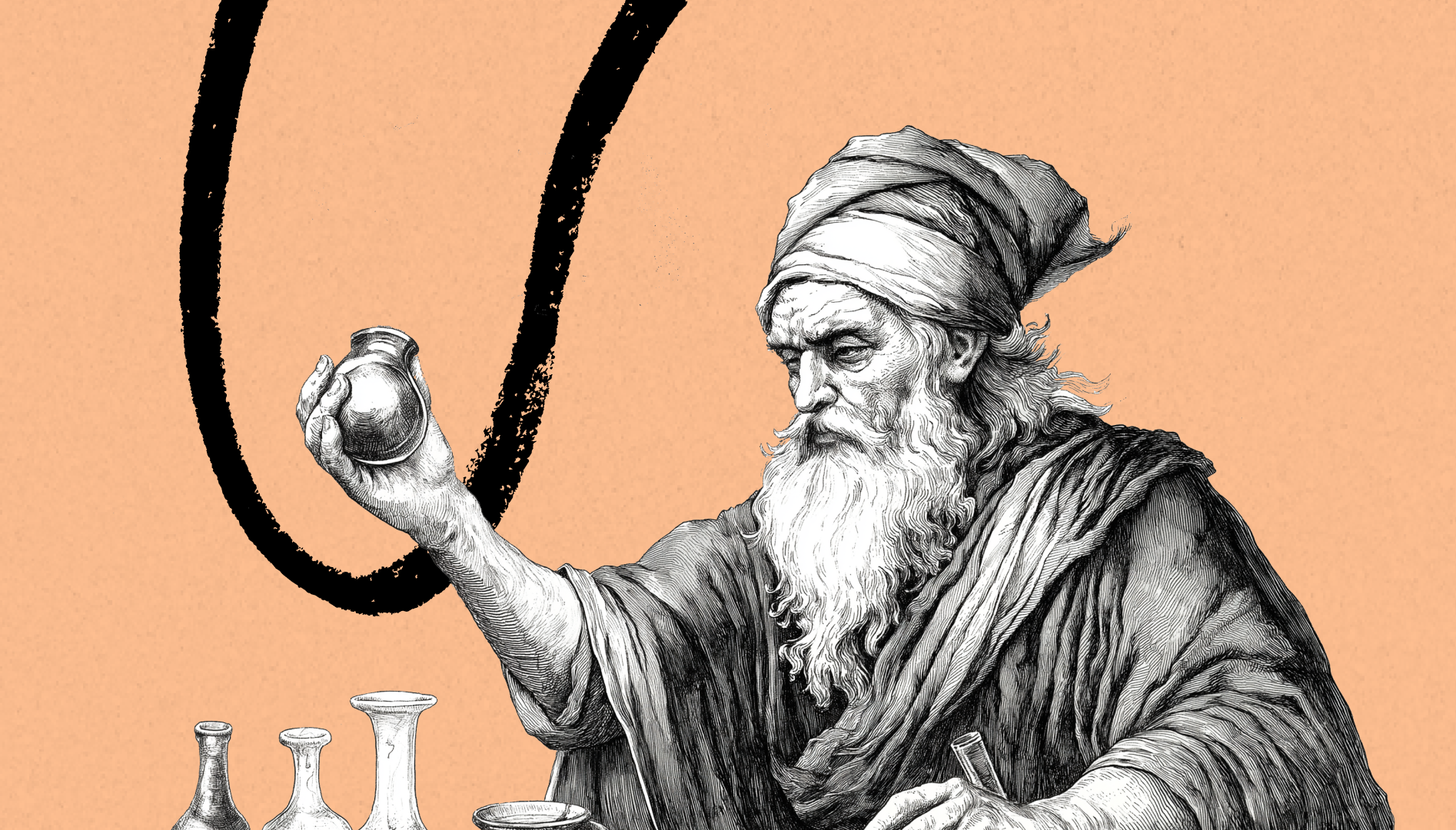
Was this newsletter forwarded to you? Sign up to get it in your inbox.
For my first project leading the product studio and consulting practice at Every, I designed and built the website for Sparkle, our AI-powered file organizer. I built a V1 that explained what Sparkle was and how it worked: It organizes all of the files in your Desktop, Documents, and Downloads folders—both existing and new ones—into a personalized system. The site looked clean and told the story well with words and images, but it wasn’t that unique compared to any other tech product.
When I shared it with the team, I got some great feedback. But on a call with Every CEO Dan Shipper to discuss the next version, he shared something with me that forced me to rethink the design from the top to the bottom: “Make it magical.”
Making something “magical” is different from making it “thoughtful” or “high quality.” Thoughtfulness and quality are the results of a process—magic is…magic. It’s the result of something that you evoke from deep within yourself—something that can be felt and therefore pursued, but can’t be defined or reduced to rules.
At Clyde, the insurance tech company I started and ran for seven years before joining Every, I pushed the team hard to execute, whether it be competing against our better-funded competitor or strategically growing our product offerings to gain market share. But in this moment, on this call with Dan, I realized that I had never made magic. Nor did I push my team to do so. I wanted high-quality results, fast, and my expectation is that great people can do this. And they did! We launched thousands of brands, many of which were major household names, and built a robust tool that changed the embedded insurance market in the U.S. Our product worked extremely well and our execution was strong, but it didn’t feel magical. I learned something important that day: Sometimes great execution isn’t good enough.
I approached the Sparkle website with fresh eyes for another pass and realized that the best version would show you exactly how it worked, with you in control of the experience through scrolling. I taught myself how to animate using After Effects, bodymovin, and GSAP, a pipeline to turn animations into JSON and then manipulate it with scroll effects. Now, the moment someone sees Sparkle’s website, they immediately understand what it does and how it works. Sparkle is magical—you get a thoughtfully organized file system without doing a single thing—and now the website was, too.
Having been an Every reader for several years, I knew that the quality of the writing was elevated and tasteful from the beginning. I wanted to bring that same attention to quality to building software products at Every Studio. But what quality means at Every—what it means to “make it magical”—only revealed itself over time.
I had imagined that quality would result from a systematic process of evaluating a problem, collecting data, developing a perspective, and delivering a solution. I thought my experience at Clyde would translate seamlessly. After all, I’d spent years making tough calls, launching products, raising money, growing go-to-market organizations, and knowing what “good” looked like. Something met my high bar if it delivered a solution to a problem well and quickly.
While I was making Sparkle’s website, I realized that this working definition of “quality” wasn’t enough in this new context. A magical experience would show, not tell. It would give you the sense of living in the future and seeing the future happen before your eyes. It required something the people at Every have written a lot about: It required taste. And that taste needs to be applied across what the product actually does, how you experience it, and how you learn about it. It needs to be upheld in every aspect of the business. Excellence isn’t just about executing on a problem or opportunity; it’s about embracing a deeper, collective sense of what good work feels like.
How do we know what good work feels like? I couldn’t tell you quite yet. Unlike other product studios, we don’t have a rubric, or an investment committee, or processes that an idea or feature needs to work through before it’s approved. “Good work” feels like a bunch of highly skilled, tasteful, diverse, and thoughtful people looking at an idea and saying, “I like that…I like that a lot”—and then being totally okay with it when the collective group comes up with an even better idea.
In the end, making magic is about pursuing a particular feeling, not a set of specifications. It’s about being less objective and more subjective. To make magic, we ask, “Do we like this?”—and we trust the answer.
Thanks to Katie Parrott for editorial support.
Brandon Gell is the head of the Studio at Every. You can follow him on X at @bran_don_gell and on LinkedIn, and Every on X at @every and on LinkedIn.
We also build AI tools for readers like you. Automate repeat writing with Spiral. Organize files automatically with Sparkle. Write something great with Lex.
Find Out What
Comes Next in Tech.
Start your free trial.
New ideas to help you build the future—in your inbox, every day. Trusted by over 75,000 readers.
SubscribeAlready have an account? Sign in
What's included?
-
Unlimited access to our daily essays by Dan Shipper, Evan Armstrong, and a roster of the best tech writers on the internet
-
Full access to an archive of hundreds of in-depth articles
-
-
Priority access and subscriber-only discounts to courses, events, and more
-
Ad-free experience
-
Access to our Discord community



Comments
Don't have an account? Sign up!